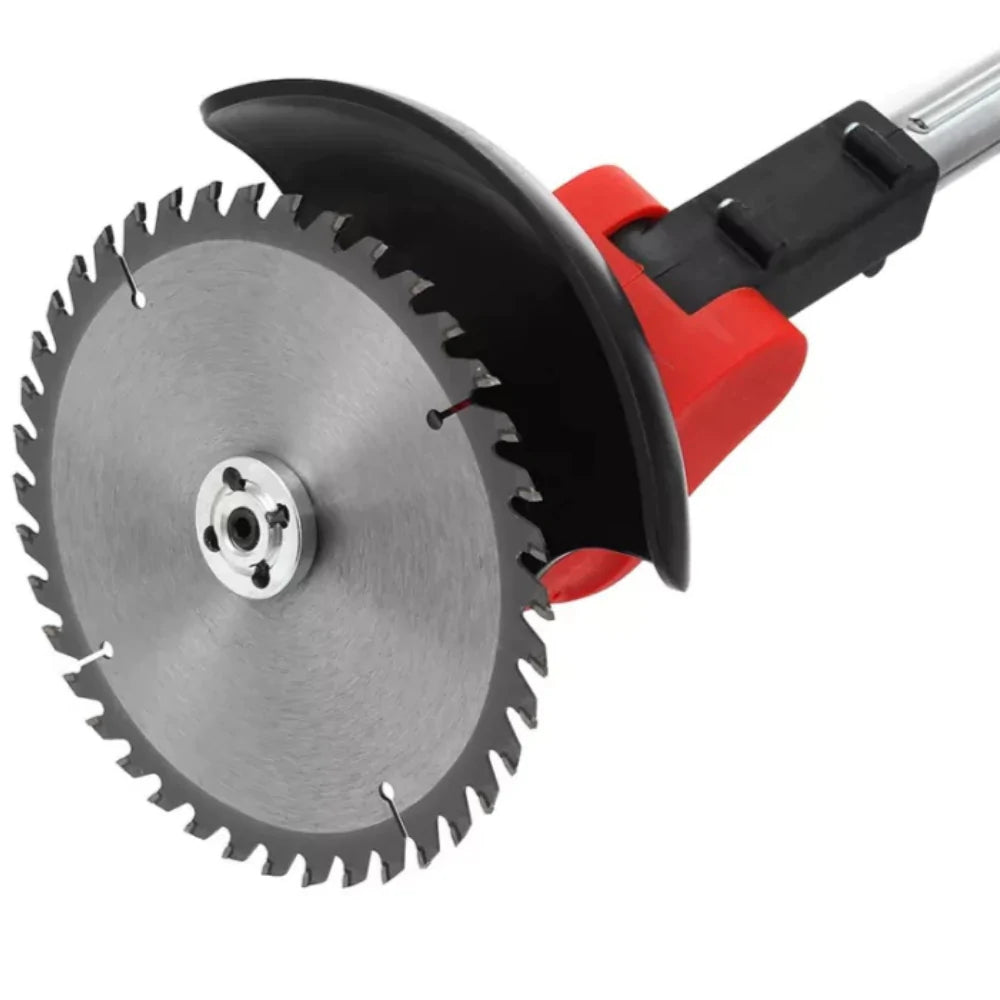Grass trimmers, also referred to as weed eaters or string trimmers, serve as indispensable tools for maintaining the pristine appearance of lawns and gardens. With various types available, each tailored to specific trimming tasks, choosing the right one can significantly impact your landscaping efforts.
One prevalent variety of grass trimmer is the electric trimmer, which draws power from an electrical outlet. These trimmers are favored by homeowners with small to medium-sized yards due to their lightweight, user-friendly nature. Electric trimmers not only emit minimal noise but also produce zero exhaust emissions, making them an environmentally conscious choice.
For those in need of more power and versatility, gas-powered grass trimmers offer a robust solution. Ideal for larger yards or areas with dense and resilient grass, these trimmers provide the necessary cutting strength. However, they tend to be noisier and emit exhaust emissions, which may not align with the eco-friendly preferences of some users.
In recent years, cordless grass trimmers have gained popularity due to their convenience. These trimmers operate on rechargeable batteries, granting users the freedom to move without being tethered to a power cord. Striking a balance between power and mobility, they are an excellent choice for medium-sized yards./
Selecting the right grass trimmer involves considering factors such as cutting width, which determines how much grass can be trimmed in a single pass. Additionally, adjustable handles and shaft length play a pivotal role in ensuring comfortable operation by accommodating users of varying heights.
Maintenance is key to prolonging a grass trimmer's life and performance. Regular cleaning of the cutting head, timely replacement of worn-out trimmer lines, and keeping the tool debris-free all contribute to maintaining efficiency.
Grass trimmers aren't just practical tools; they also contribute to the aesthetic appeal of your lawn or garden. Choosing the appropriate trimmer based on your yard's size and your preferences ensures efficient and effective trimming. Regular maintenance will extend the trimmer's lifespan, enabling you to enjoy a well-maintained outdoor space.
Types of Grass Trimmers
- Electric Trimmers: These trimmers rely on electricity and are suited for smaller yards or areas with less dense vegetation. They come in corded and cordless options, offering convenience and versatility.
- Gas-Powered Trimmers: Known for their cutting power, gas-powered trimmers are ideal for larger yards and tougher grass. They run on gasoline but can be louder and produce exhaust emissions.
- Cordless Trimmers: Battery-powered and cordless, these trimmers offer mobility and are suitable for medium-sized yards.
- Straight Shaft Trimmers: Designed for extended reach, these trimmers are suitable for trimming under obstacles like shrubs and fences.
- Curved Shaft Trimmers: Lighter and more ergonomic, they are ideal for regular trimming and maintaining smaller to medium-sized lawns.
- 4-Cycle Trimmers: These trimmers feature a four-stroke engine running on gasoline and are known for their power and durability.
- 2-Cycle Trimmers: These trimmers have a two-stroke engine and are lighter and more compact than 4-cycle models, striking a balance between power and portability.
- Hedge Trimmer Attachments: Some trimmers come with interchangeable attachments, such as hedge trimmer blades, increasing their versatility.
- Wheeled Trimmers (Walk-Behind Trimmers): Larger and wheeled, these trimmers are suitable for tall grass and substantial trimming tasks.
- Telescopic Trimmers: Featuring adjustable shaft lengths, these trimmers are useful for reaching high or distant areas without the need for ladders.
Understanding these types will help you choose a grass trimmer that aligns with your yard's size, vegetation, and your personal preferences.
Factors to Consider When Choosing a Grass Trimmer
Selecting the right grass trimmer involves considering several essential factors:
- Yard Size and Terrain: Determine the size of your yard and its terrain to choose a trimmer that suits your specific needs.
- Cutting Width: The trimmer's cutting width affects efficiency, with wider widths being better for larger areas and narrower widths for precision work.
- Power Source: Choose between electric, gas-powered, or cordless trimmers based on your requirements and environmental concerns.
- Noise Level and Environmental Impact: Consider the noise level and environmental impact of the trimmer type.
- Adjustable Handles and Shaft Length: Ensure the trimmer is adjustable to your height and reach for comfortable operation.
- Trimmer Line Type: Different lines are designed for specific grass types and tasks.
- Ease of Starting: Gas-powered trimmers may require more effort to start compared to electric or cordless models.
- Weight and Maneuverability: A lighter trimmer is easier to maneuver, especially for extended use.
- Attachments and Accessories: Some trimmers offer interchangeable attachments, enhancing their versatility.
- Budget: Set a budget in line with your needs and preferences.
- Brand Reputation and Reviews: Research the brand reputation and read user reviews to gauge performance and reliability.
- Warranty and Customer Support: Check the warranty and availability of customer support.
Considering these factors ensures you choose a grass trimmer that aligns with your lawn care needs.
Maintenance and Care of Grass Trimmers
Proper maintenance and care are essential to ensure your grass trimmer's longevity and optimal performance. Here are key steps to keep your trimmer in excellent condition:
- Regular Cleaning: After each use, clean the cutting head, guard, and housing to remove grass clippings, dirt, and debris.
- Inspect Trimmer Lines: Check the condition of the trimmer lines before each use and replace worn or damaged lines.
- Oil and Lubrication: Gas-powered trimmers may require regular lubrication of engine components.
- Air Filter Maintenance: For gas-powered trimmers, clean or replace the air filter as recommended by the manufacturer.
- Spark Plug Maintenance: Inspect and clean the spark plug regularly for gas-powered trimmers.
- Fuel System Care: If using a gas-powered trimmer, follow fuel maintenance guidelines.
- Storage Preparation: If storing the trimmer for an extended period, empty the fuel tank and store it in a dry, cool place.
- Handle and Shaft Maintenance: Keep adjustable handles and shafts clean and lubricated.
- Safety Gear Inspection: Inspect safety gear for damage and replace worn or damaged gear.
- Professional Servicing: Consider professional maintenance and tune-ups, especially for gas-powered models.
- Battery Care (Cordless Models): Follow battery care guidelines for cordless trimmers.
- User Manual Reference: Always refer to the user manual for maintenance schedules and instructions.
Following these practices prolongs your grass trimmer's life and ensures efficient operation.
Benefits of Grass Trimmers
- Enhanced Lawn Aesthetics: Grass trimmers contribute to a well-manicured and neat lawn appearance by reaching challenging areas, creating clean edges, and defining borders.
- Time and Effort Savings: Grass trimmers expedite lawn maintenance, reducing the time and effort needed compared to manual methods.
- Versatility and Accessibility: With interchangeable attachments, grass trimmers handle various landscaping tasks, making them cost-effective and space-saving solutions.
In summary, grass trimmers are versatile tools that not only enhance the aesthetics of your lawn but also save you time and effort in maintaining your outdoor space. They offer precision trimming, allowing you to reach areas that lawnmowers cannot access easily, such as along fences, walls, and around trees.
By choosing the right type of grass trimmer based on your yard's size and your specific needs, you can achieve efficient and effective landscaping. Whether you opt for an electric trimmer for smaller yards, a gas-powered trimmer for larger areas, or a cordless trimmer for mobility, the right tool can make a significant difference in your lawn care routine.
Furthermore, regular maintenance and care are crucial to ensuring your grass trimmer's longevity and optimal performance. Proper cleaning, line replacement, lubrication, and adherence to manufacturer guidelines for maintenance are all key to keeping your trimmer in excellent condition.
Finally, the benefits of using grass trimmers extend beyond just lawn aesthetics. These tools save you valuable time and effort, making lawn maintenance more manageable and enjoyable. Their versatility, with interchangeable attachments for various landscaping tasks, makes them a cost-effective and space-saving solution for keeping your outdoor space well-groomed.














